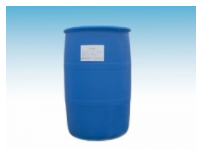Cationic surfactants are widely used in oil agents, such as amines (fatty amines and quaternary ammonium derivatives), which can be used as emulsifiers, antistatic agents and bactericides. High carbon alkylamine derivatives also play a strong role in the bunching of oil agents. The commonly used fungicide "jieermiao" (alkyl, benzyl, dimethyl quaternary ammonium hydrochloride) is the derivative of quaternary ammonium salt.
When using "jieermiao" in the formulation of oil agent, the dosage should be appropriate, because it is easy to make the solvent unstable when it is compatible with other surfactants. The consumption of germicide in general oil should only keep the oil agent itself not corrupt in storage and transportation, and it can not ensure that the oil is used as the bactericidal function during the use of the emulsion. In the process of using oil, the synthetic fiber factory should add brominated nitro compounds or isothiazoles in the emulsion according to the process requirements, so as to ensure that the emulsion does not produce corruption in the use process. In all kinds of pet oil agents, germicide jieermiao was used in oil agent experiment factory, and high carbon primary amine surfactants were used in pet cotton type staple oil agent, all of which achieved good results.

Amphoteric surfactants used in oil agents are representative of the high carbon tertiary amine oxidation amines. It has excellent antistatic property in non-aqueous state, which is not achieved by PK antistatic agents. Therefore, in the low humidity fiber production plant, the use of amine oxide surfactants can also obtain excellent antistatic properties. The non-woven fabric oil agent is mainly prepared by this kind of products. The application of oxidized ammonia products in the oil mixture is affected by a lot of froth. The proper defoamer or defoaming agent should be selected when used, such as polyether products, and the situation should be improved.
Alcohol ether, namely fatty alcohol polyoxyethylene ether (AEO), is the addition of fatty alcohol and ethylene oxide (EO). Different AEO has different emulsification, lubricity and wettability because of different carbon number and EO number of fat chain. The performance of alcohol ether is affected by the following factors:
1) With the change of EO number in alcohol ether, the surface tension of AEO changes, and the surface tension of AEO with different EO number changes with the change of solution concentration. When the number of EO increases, the surface tension increases, and the wettability of the fiber decreases.
2) The friction properties of alcohol ether are affected by the number of EO addition moles. When the number of EO increases, the static friction coefficient μ s and the dynamic friction coefficient μ D increase to a certain extent, but when the number of EO reaches more than 15, the μ change is no longer obvious. Therefore, when the oil agent is mixed, the desired smoothing effect can be achieved by selecting the appropriate EO addition number.
3) The change of alkyl carbon number in alcohol ether has great influence on friction coefficient, surface ability and wettability. The longer the alkyl chain, the larger the friction coefficient, surface ability and wettability. The longer the alkyl chain is, the smaller the friction coefficient is. When the friction coefficient is over 18, it reaches a fixed value, and then basically remains unchanged.